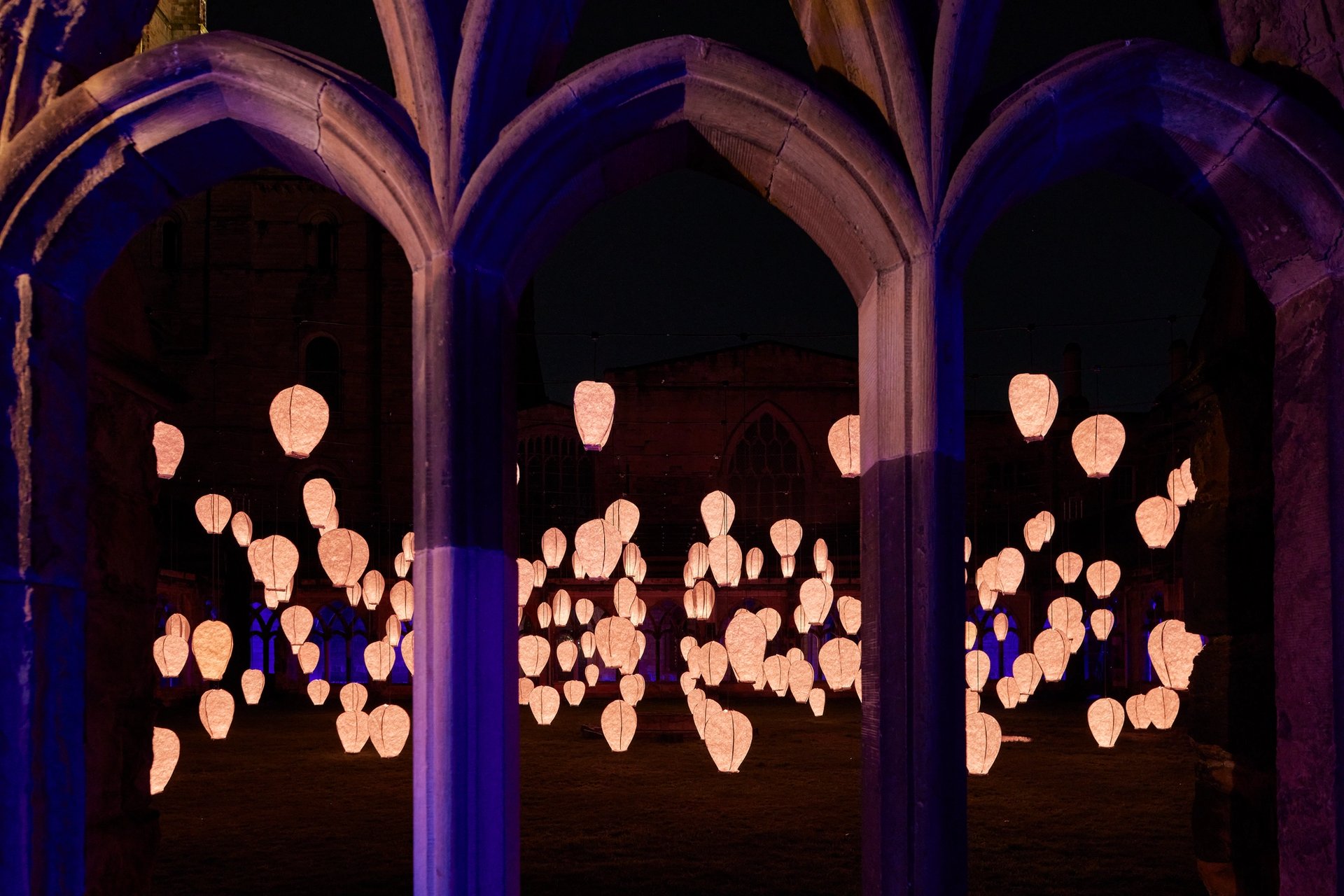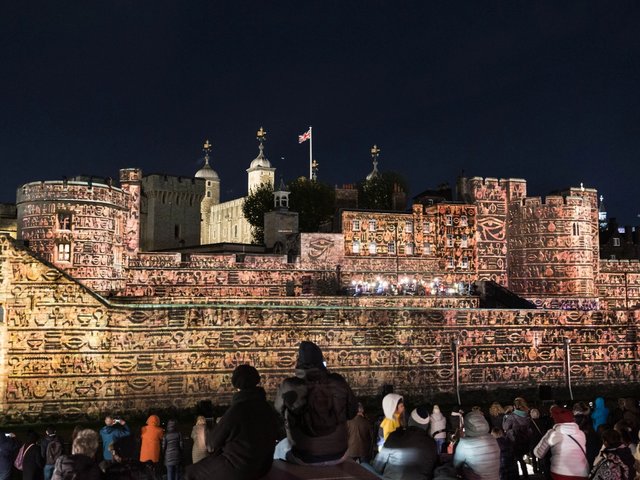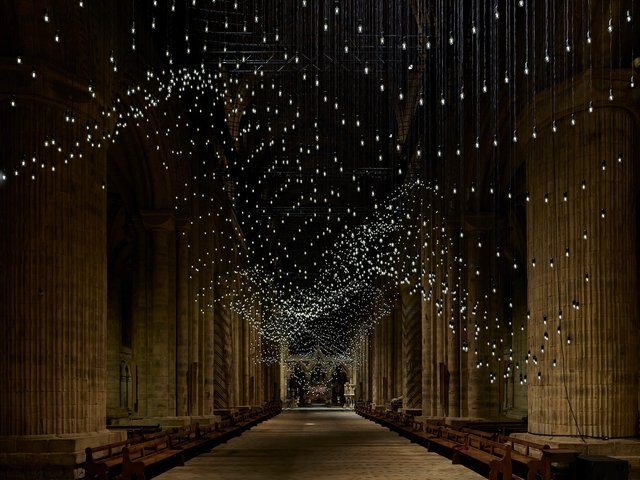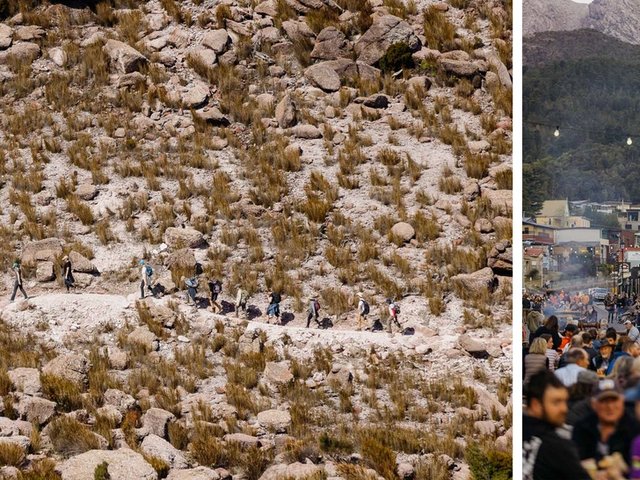A field of blazing flowers bloomed in front of Durham cathedral, a net of pulsing green light arched over the market place, and the traffic control signs were warning of global warming and mass extinctions. Farewell to Arctic ice and the Queenwood shrub frog, they read, and they might have read farewell to Lumiere. For three nights and one last time, the much admired—and imitated—Lumiere festival is bringing joy, crowds and international light artists to the dark winter streets.
After a review by Durham County Council, which part funds the festival, it was announced last month that Lumiere’s lights are being turned off once and for all. This is after 16 years and nine festivals, with all events entirely free. Reform, which took an astonishing 65 of the 98 council seats in May on a promise of drastic cost cutting, has been widely blamed—but in fact the review was announced by the previous Lib Dem-Conservative coalition council.
The first Lumiere cost £650,000. This year that has risen to £2.5 million, with £500,000 provided by Arts Council England and just under £1m plus major administrative support from the council. The balance has been raised by the public art charity Artichoke, which curates the festival, from 101 supporters—ranging from Durham University to Greggs bakery.
Helen Marriage, the director of Artichoke, said when announcing the death of Lumiere that the level of “investment and commitment” needed to sustain it had become “increasingly difficult to secure”. Speaking to The Art Newspaper, she puts the decision in the context of a lack of funding for culture stretching back decades in the UK, and a failure to convince politicians that the arts are the breath of life, as important as bin collecting. “The arts have always operated on a shoestring, but now somehow we’ve lost the plot”, she says. Over the nine festivals Lumiere is estimated to have drawn 1.3 million visitors to Durham. It is also estimated to have added £43 million to the economy of the beautiful World Heritage city, which is at the heart of a county with pockets of high unemployment and deprivation.
The crowds have grown every year and the festival has spread beyond the city centre to diffuse them, this year taking in the Locomotion railway museum at Shildon, to celebrate 200 years of rail travel. Marriage points out, however, that every expansion generates extra cost without extra income. “Security is a huge consideration now—the landscape has changed completely since the Manchester Arena attack [in 2017, in which 22 people were killed], and it’s one area where scaling back is completely impossible,” she says.

Amelia Kominsky, Solace in Durham Cathedral’s cloister
Courtesy of Artichoke
This year all 100,000 free tickets for timed access to the central area were booked out a week in advance. On the opening night the streets were heaving. This was despite heavy rain, which caused the river to rise so fast that three waterside pieces had to be abandoned. The cathedral, housing a spectacular sound and light piece, Everyone Ever, by the US artists Elaine Buckholtz and Ian Winters, had to close its doors several times to control the crowds and mop the soaking floor.
Lumiere will not have entirely have left Durham after this weekend. The city has many permanent installations from previous festivals as souvenirs, including benches that light up when people sit on them for a chat, a giant desk lamp illuminating a previously dingy corner, a luminous heron swooping over the river, and Helvetictoc, a pernickety clock which has projected words spelling out the almost correct time onto the Millennium Place library wall since 2013.
There has been a chorus of insistence, from local residents, visitors, artists and politicians—including the Reform council leader Andrew Husband—that the lights will not be allowed to go out forever in Durham.
“There has been a tide of goodwill, so it may be that something will emerge,” Marriage says sadly. “But I don’t think it will be us, it won’t be Lumiere, it won’t be Artichoke.”





